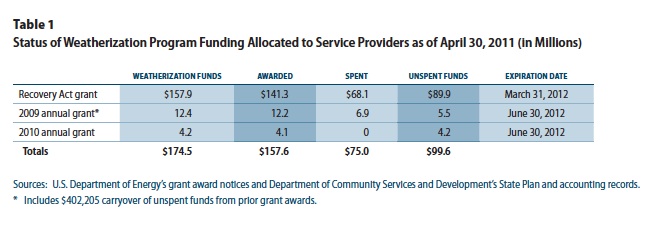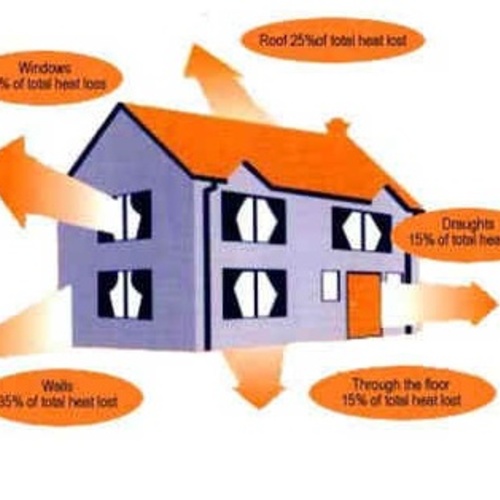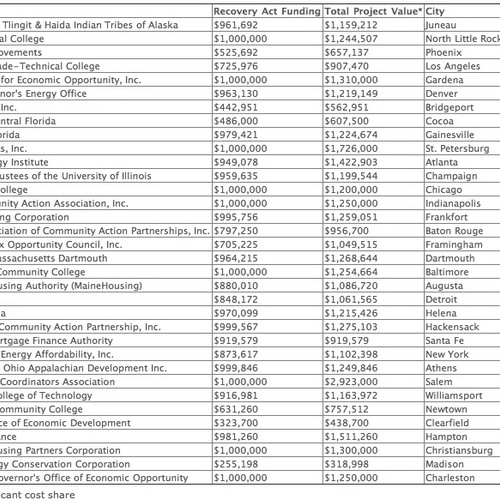Image Credit: California State Auditor, Bureau of State Audits
Image Credit: California State Auditor, Bureau of State Audits California’s Department of Community Services and Development overestimated the average per-home weatherization cost, although the state has come up with a more rigorous set of weatherization protocols that are expected to increase the per-unit expense. It will cost $2,539, on average, to weatherize each home targeted for an upgrade, according to the CSD. The state auditor notes, however, that at the state’s current weatherization production level, it faces a potential shortfall of 14,750 homes, which would leave $37.4 million in unspent weatherization funds.
Everybody has frustrations at work, but such frustrations are particularly acute for the employees of California’s Department of Community Services and Development (CSD), the agency that administers the state’s Weatherization Assistance Program, including weatherization activity funded by the American Recovery and Reinvestment Act.
On July 11, the California Bureau of State Audits presented a report showing that the CSD was far behind in training workers in current auditing and weatherization procedures, and just as far behind in spending federal weatherization funds, which are allocated on a timetable by the Department of Energy.
On August 1, Senator Alex Padilla (Democrat of Van Nuys), the chairman of the Senate Energy, Utilities and Communications Committee, held a hearing pegged to the CSD’s failure to meet production and spending goals. The goals have a direct impact not only on the energy efficiency of homes occupied by low-income families, but also on employment levels among weatherization workers.
“Here we are at the 11th hour with millions of dollars in federal funds at risk and, most importantly, hundreds of job opportunities at risk,” said Padilla, as noted in a recent post by investigative site California Watch. “This is a prime example of why the public is increasingly frustrated with our government.”
Challenges and bottlenecks
As we’ve mentioned in the past, delays initially stemmed from administrators’ difficulties in sorting through the federal regulations included in the Recovery Act – especially requirements imposed by the Davis-Bacon Act, a 1931 law that requires payment of prevailing wages on public works projects.
The current challenges, as the state auditor puts it, focus on how to maximize production and ensure that the first half of California’s $141.3 million allocation of Recovery Act funds are properly spent before the DOE deadline, currently set at March 31, 2012. At this point, the auditor is concerned that the state is in danger of leaving unspent $37.4 million of its initial $92 million Recovery Act grant.
Complicating matters is the fact that the state also has received standard WAP grants – $12.4 million in 2009 and $4.2 million in 2010 – that so far have gone largely unspent. In addition, the CSD overestimated the average per-home cost for weatherization upgrades, which means it must increase production to get the money spent and/or create new protocols requiring more thorough (and expensive) improvements. The agency is trying to do both.
A Pandora’s box of new protocols
CSD originally estimated that upgrade costs would average $3,660 per home, but the average as of April 30, 2011, has been $2,539. In trying to boost the energy savings that each upgrade will yield, CSD has rolled out a new set of protocols that would go well beyond minimal measures to include thorough energy auditing, installation of attic and wall insulation, and a variety of air-sealing techniques.
The new protocols are sensible, but implementing them has touched off another cascade of headaches. CSD reported that “its training efforts were hampered, in part, by the limited basic computer skills of the weatherization workforce,” the state auditor said in its report. “To overcome the computer literacy deficiencies of the weatherization workers, service providers created two-person assessor teams by adding a staff support person to assist the assessors with the computer input.
“The team approach necessitated changes to the training curriculum to gear instruction to support staff and increased the number of training sessions needed to accommodate the increased number of people requiring training,” the auditor continued. “In addition to the difficulties already noted, Community Services reported that the service providers’ need for increased understanding of how energy audits and the priority list work, and the need to develop standards and procedures related to the new protocol, caused the training timeline to be extended beyond the protocol implementation date.”
Anyone who thinks government work is easy probably should reconsider.
Weekly Newsletter
Get building science and energy efficiency advice, plus special offers, in your inbox.















0 Comments
Log in or create an account to post a comment.
Sign up Log in